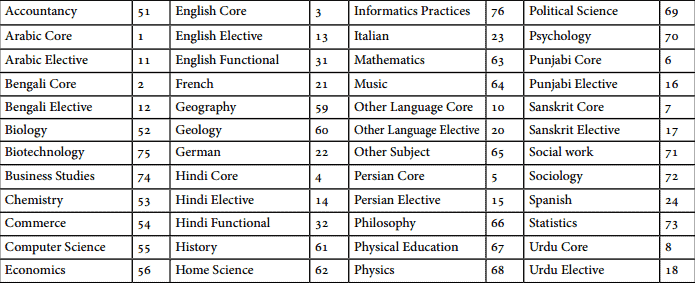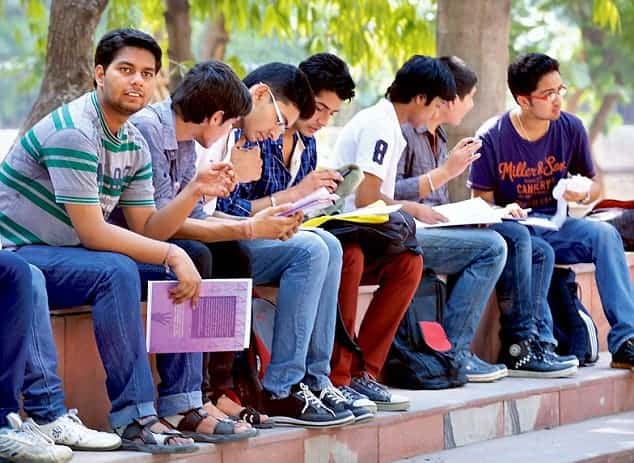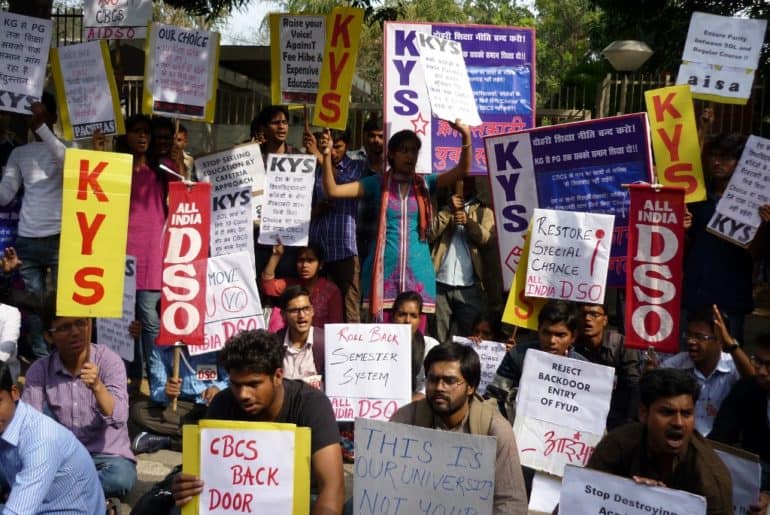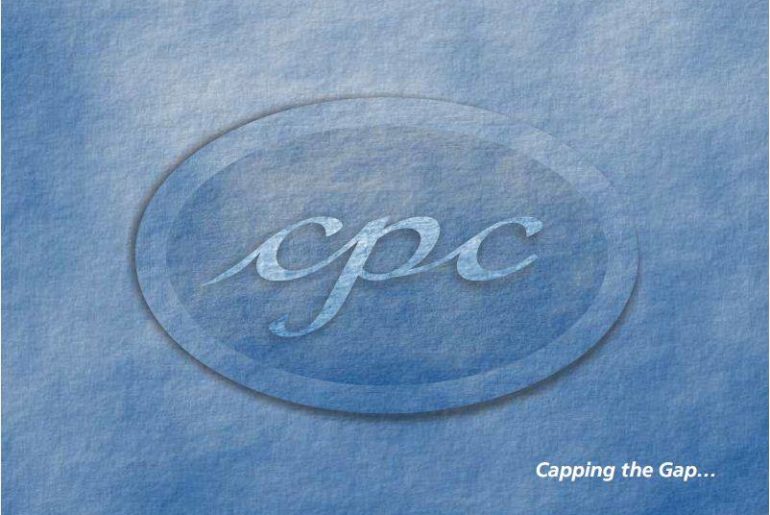With the Delhi University admission season just round the corner, the University is ensuring that all information regarding the admission procedure and policies is vivid to the aspirants. Admission in the University of Delhi is done on the basis of the ‘Best of Four Subjects’ percentage.
Delhi University Guidelines have divided the calculation of best of four percentage into three categories; one each for admissions in B.A. (Hons.) Courses, B.A. Programme and B.Com Programme Courses and Science Courses respectively.
A. Procedure for calculation of ‘Best of Four’ Subjects Percentage for B.A. (Hons.) Course:
The best of four subjects should include-
i.) One Language (Core/Elective/Functional)
(In case a candidate has studied both elective and core in any language(s), then the core language will be treated as language while elective language can be considered as an academic/elective subject)
ii.) The subject in which admission is sought
(If the subject in which the candidate is seeking admission in the Honours course is not included in the Best of Four, he/she is entitled to a disadvantage of 2.5%)
iii.) Any two other academic/elective subjects as per List A.
(If any subject not included in List A is considered while calculating the Best of Four by a candidate, he/she is entitled to a disadvantage of 2.5% for each subject considered which is not included in List A)
List A
The following subjects are considered elective/academic and can be included in the Best of Four-
| Physics |
English |
Italian |
Punjabi |
| Arabic |
French |
Mathematics |
Sanskrit |
| Bengali |
Geography |
Music# |
Sociology |
| Botany |
Geology |
Persian |
Spanish |
| Chemistry |
German |
Philosophy |
Statistics |
| Commerce** |
Hindi |
Physical Education## |
Urdu |
| Computer Science |
History |
Political Science |
Zoology |
| Economics |
Home Science |
Psychology |
|
** Accountancy shall be considered equivalent to Commerce wherever any board (such as CBSE) is not offering Commerce as a subject.
# Music will be treated Academic/Elective only for Honours in Music.
## Physical Education will be treated Academic/Elective only for Honours in Physical Education.
More Guidelines:
1. Admission to certain courses such as B.A. (Hons.) Journalism, B.A. (Hons.) Applied Psychology and B.A. (Hons.) Hindi Patrakrita shall follow the procedure of calculation of the Best of Four Subjects percentage as per certain other subjects, given as follows:
| B.A. (Hons.) Course: |
Follow Guidelines/ Procedure of:
|
| B.A. (Hons.) Journalism |
B.A. (Hons.) English |
| B.A. (Hons.) Hindi Patrakarita |
B.A. (Hons.) Hindi |
| B.A. (Hons.) Applied Psychology |
B.A. (Hons.) Psychology |
2. For admission to B.Com (Hons.), the Best of Four percentage should include one language (core/elective/functional), the subject Commerce (or Accountancy in case of boards that do not offer Commerce as a subject; eg., CBSE Board) and any other two elective subjects mentioned in the list A. The candidate should have studied and passed Maths at the qualifying level exam in order to be eligible for the admission to the course.
3. Admission to B.A. (Hons.) Social Work will be based on Best of Four Percentage including one language and three academic/elective subjects as per List A.
4. The subject ‘Informatics Practices’ will be equivalent to Computer Science for admission in B.Sc. (Hons.) Computer Science only.
5. The candidates must have studied and passed Mathematics at qualifying exams for admission to B.A. (Hons.) Economics and Commerce.
6. The University may define any other relevant subjects as Academic/Elective for a particular Honours Course.
Admissions to Honours in any Language Course:
1. For admission to Honours in any language course, an advantage of 2% in the Best of Four percentage may be given to those candidates who have studied the elective language.
2. In case any candidate has not studied the language at qualifying exam and is seeking admission to Honours in that language, he/she may be given a disadvantage of 5% in the Best of Four Percentage.
3. For admissions to Honours in English and Hindi, the candidate must have studied and passed the respective language in the qualifying exam and has to be included for calculation of Best of Four percentage.
B. Procedure of calculation of Best of Four Percentage for B.A. (Programme) and B.Com (Programme) Courses:
The following subjects have to be included in the calculation of the Best of Four percentage:
i.) One Language (Elective/Core/Functional)
ii.) Any three elective subjects can be chosen.
(A disadvantage of upto 5% may be imposed on the Best of Four percentage in case of change of stream, which the college will have to notify beforehand by either uploading on their website or informing the University)
iii.) For admission to B.A. (Vocational) only, related vocational subjects may be treated at par with academic/elective subjects.
iv.) If a candidate opts for MIL (except Hindi) as a subject, an advantage of 10% may be given in Best of Four in those colleges where MIL is offered as a subject.
C. Admissions to Science Courses:
i.) The basis of selection for Mathematical Sciences,/Science/Home Science Courses remains unchanged.
ii.) The subjects included for the basis of selection (PCM/PCB/PCMB) must have at least 70% component of theory exam (theory exam does not include internal assessment/continuous evaluation etc.) in the qualifying exam else a disadvantage of 10% shall be imposed on each subject.
Examples of Calculation of Best of Four Marks:
| Preferred Course Option |
Subjects and Marks |
Calculation of Best of Four |
Best of Four Marks |
| Honours in Commerce |
Economics (95),
Accountancy (98),
Business Studies (94),
Mathematics (92),
English (95) |
(A) English (95) +
(B) Accountancy (98) +
(C) Economics (95) +
(D) Business Studies (94)[Since Accountancy is considered in case of Commerce not being offered as a subject] |
95.5% |
| Honours in Commerce |
Economics (92),
Accountancy (92),
Mathematics (98),
English (90),
Music (95) |
(A) English (90) +
(B)Mathematics (98) +
(C) Economics (92) +
(D) Accountancy (92)[Music is considered Elective/Academic subject for Honours in Music only] |
93% |
| Honours in Economics |
Mathematics (90),
Physics (88),
Chemistry (91),
Economics (75),
English (93) |
(A) English (93) +
(B) Chemistry (91) +
(C)Mathematics (90) +
(D) Physics (88) |
90.5% – 2.5% = 88%[Since the course in which admission is sought is not considered in the Best of Four percentage] |
| Honours in English |
English (88),
Entrepreneurship (92)
Accountancy (81),
Economics (83),
Web Designing (96) |
(A) English (88) +
(B) Economics (83) +
(C) Entrepreneurship (92) +
(D) Web Designing (96) |
89.75% – 2.5% – 2.5% = 84.75%[Since Entrepreneurship and Web Designing are not a part of the list of elective subjects mentioned in List A] |
Image Credits: dailymail.co.uk
Arushi Pathak
[email protected]














